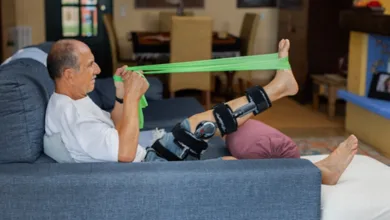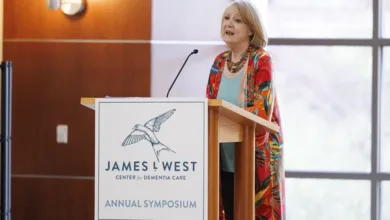The Secret to Exercise? Everything Counts.

When exercising, everything counts. Therefore, the key to exercise is movement.
Sure, some of that movement may come from a 45-minute spin class, a 30-minute swim, an hour walking hills in the great outdoors, or a 20-minute session with free weights.
But on days you can’t get to that spin class — and even on days you can — there’s an acronym fitness folks are touting more than ever for a practice that needs to find its way into all our lives every single day.
The acronym is N.E.A.T. It stands for “Non-Exercise Activity Thermogenesis.”
As explained by the National Institutes of Health, N.E.A.T. is “the energy expended for everything we do that is not sleeping, eating, or sports-like exercise.” Even seemingly small movements, the report explains, “increase metabolic rate substantially.”
These seemingly small movements are good for your overall health. And the boosts to your metabolism can help you lose weight.
Fabio Comana, an exercise physiologist who teaches behavior change science at San Diego State University, told me that during the pandemic, his gym, like most others, was closed. He tried to maintain his normal workout regimen, but still gained about eight pounds. By the end of summer though, he’d lost them with seemingly little effort.
He didn’t change his eating habits. He didn’t amp up his exercise.
Instead, he made a point of moving more. He walked around campus between classes. He stood at his desk more than he sat. He took the stairs to a restroom on another floor. And the pounds dropped right off.
Focused energy — the recommended 150 minutes per week — has a myriad of benefits. But, Comana said, “when you look at expending calories, exercise is not the end-all.”
Comana explained: The average American male consumes approximately 18,000 calories a week; the average American female, approximately 13,000. If you expend 500 calories (which is a lot) in an hour-long workout three times a week, that’s just 1,500 calories — barely a tenth of what you’ve eaten that week. That leaves plenty of hours in the day to expend calories.
So, build habits. Pace around. Swinging your legs while sitting. Stand more often. Walk around your house while talking on the phone. Stretch your fingers toward the ceiling, then your arms out to the side. Pull weeds or sweep your sidewalk.
Comana also recommended setting an ongoing timer for 30 minutes. Each time it goes off, move in some way for up to three minutes. Maybe every time it goes off you’ll do five push-ups or squats. By day’s end, you’ve amassed 40 or so!
This especially works for me. As a freelance writer, I’m home by myself; my working area is mere footsteps from the kitchen. I mosey in and out of there more than my stomach tells me I ought to.
When my timer goes off, sometimes I take my stairs a few times. Sometimes I march around the living room. Sometimes I do jumping jacks. Then I set the timer again and repeat.
Again, just move, whenever and wherever you can. Start now! Your body is meant to move. I bet the more you move, the more you’ll want to move more.
In a nutshell? It all counts. Happy New Year.





